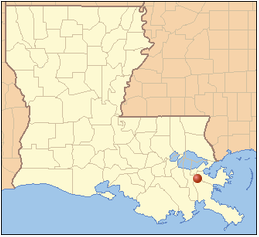| Home | Search | Emissions | Pollutants | About the Database |

Phillips 66 (2418), Belle Chasse
LDEQ Accident Report
| Accident # | 157199 |
| State Police # | 14-02928; 14-02941 |
| Accident Date | 2014-07-02 |
| Report Date | 2014-07-08 |
| Follow-up Date | 2015-02-15 |
| Follow-up: | Yes |
Pollutants Released
| Pollutant | Duration | Point Source | Greenhouse Gas | Criteria Pollutant | Ozone forming chemical | Amount of Release |
| Carbon Monoxide | 20m | FCC Regenerator Flue Gas Bypass Valve | NO | YES | NO | 1,598.0 pounds |
Accident Classified As: Reportable Quantity
Cause of Problem: Human Factors
The Fluid Catalytic Cracker (FCC) Regenerator flue gas is normally routed to the CO Boilers 301-B-2A adn B-2B and then those gases are routed to the Wet Gas Scrubber. On July 2nd power was unexpectedly interrupted to the FCC Regenerator Flue Gas Bypass Valve (301-HV-1) solenoid causing the valve to partially open for 12 minutes. HV-1 closed when power was re-established. Operations and Maintenance responded by troubleshooting the source of the intermittent power loss. On July 3rd the same phenomenon recurred, HV-1 opened partially for 6 minutes. A root cause analysis (RCA) investigation was completed and revealed that during troubleshooting of soot blower problems, contract employees opened three fuses in the Remote Instrumentation Enclosure (RIE) to isolate the fuses and disconnect the wires. This caused HV-1 to open, releasing carbon monoxide to the atmosphere. Operations saw the vent open and close twice but no one was in the RIE when operations went to investigate. Operations requested the instrument shop troubleshoot all connections for HV-1, but everything was found in order. The next day contract employees received their work permit to continue troubleshooting the soot blowers and again opened three fuses and disconnected the wires in the RIE. The vent valve was observed open by Operations and Instrument Technicians were once again called in to investigate. The instrument technicians found the fuse block was open and the wires were removed from the HV-1 fuse block. The wires were reconnected, the fuse block was closed and HV-1 went in to normal operation.
Discharge Preventable - Yes
Notes/Remedial Actions
Operations and Maintenance teams began and continued to investigate the origin of the intermittent power loss. The RCA identified several corrective actions: 1) Enforce existing procedure that states a Phillips 66 Instrument Technician must be present when electricians are troubleshooting electrical related systems 2) Clearly label, color code and move the soot blower fuse terminals in order to segregate fro the HV-1 wiring.

Connect With Us: